

Classical element. Segment of the macrocosm showing the elemental spheres of terra (earth), aqua (water), aer (air), and ignis (fire).
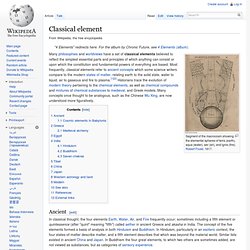
Robert Fludd. 1617. Many philosophies and worldviews have a set of classical elements believed to reflect the simplest essential parts and principles of which anything can consist or upon which the constitution and fundamental powers of everything are based. Most frequently, classical elements refer to ancient concepts which some science writers compare to the modern states of matter, relating earth to the solid state, water to liquid, air to gaseous and fire to plasma.[1][2] Historians trace the evolution of modern theory pertaining to the chemical elements, as well as chemical compounds and mixtures of chemical substances to medieval, and Greek models.
Many concepts once thought to be analogous, such as the Chinese Wu Xing, are now understood more figuratively. Ancient[edit] Cosmic elements in Babylonia[edit] Greece[edit] Medieval alchemy[edit] Jean Houston. Jean Houston (born 10 May 1937) is an American author involved in the "human potential movement. "[1] Early life and education[edit] Houston was born in New York City to Mary Todaro Houston who was of Sicilian descent, and Jack Houston who was related to Sam Houston of Texas.[2] Her father was a comedy writer who developed material for stage, television and the movies. His work required him, and the family, to move frequently. Houston attended Barnard College in New York. She subsequently got a Ph.D. in psychology from the online Union Graduate School and a Ph.D. in Religion from the online Graduate Theological Foundation. Career[edit] While participating in a government sanctioned research project on the effects of LSD (before such research was banned), Houston became acquainted with Robert Masters,[4] a writer and a researcher into the varieties of human behavior and potentials.
New Thought. The Voice of the Silence. Helena Petrovna Blavatsky (Russian: Еле́на Петро́вна Блава́тская, Ukrainian: Олена Петрівна Блаватська), born as Helena von Hahn (Russian: Елена Петровна Ган, Ukrainian: Олена Петрівна Ган; 12 August [O.S. 31 July] 1831 – 8 May 1891), was a Russian occultist.[1] In 1875, Blavatsky, Henry Steel Olcott, and William Quan Judge established a research and publishing institute called the Theosophical Society.
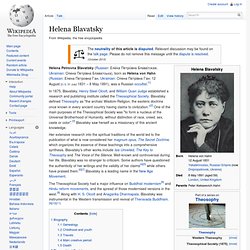
Blavatsky defined Theosophy as "the archaic Wisdom-Religion, the esoteric doctrine once known in every ancient country having claims to civilization. Tree of life (Kabbalah) The Tree of Life, or Etz haChayim (עץ החיים) in Hebrew, is a classic descriptive term for the central mystical symbol used in the Kabbalah of esoteric Judaism, also known as the 10 Sephirot.
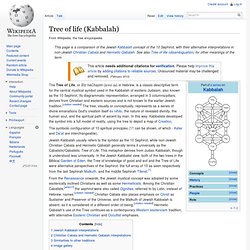
Its diagrammatic representation, arranged in 3 columns/pillars, derives from Christian and esoteric sources and is not known to the earlier Jewish tradition. Da'at. For the band, see Dååth.
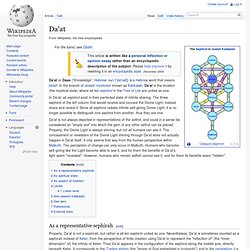
In Da'at, all sephirot exist in their perfected state of infinite sharing. The three sephirot of the left column that would receive and conceal the Divine Light, instead share and reveal it. Since all sephirot radiate infinite self-giving Divine Light, it is no longer possible to distinguish one sephira from another, thus they are one. Da'at is not always depicted in representations of the sefirot, and could in a sense be considered an "empty slot" into which the gem of any other sefirot can be placed. Properly, the Divine Light is always shining, but not all humans can see it. As a representative sephirah[edit] Sephirot. Sephirot (/sfɪˈroʊt/, /ˈsfɪroʊt/; Hebrew: סְפִירוֹת Səphîrôṯ), meaning emanations, are the 10 attributes/emanations in Kabbalah, through which Ein Sof (The Infinite) reveals himself and continuously creates both the physical realm and the chain of higher metaphysical realms (Seder hishtalshelus).
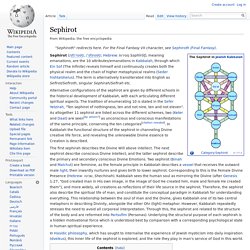
The term is alternatively transliterated into English as Sefirot/Sefiroth, singular Sephirah/Sefirah etc. Alternative configurations of the sephirot are given by different schools in the historical development of Kabbalah, with each articulating different spiritual aspects. Kabbalah. Third eye. A Cambodian Shiva head showing a third eye.
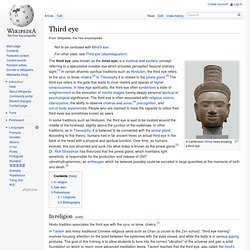
In some traditions such as Hinduism, the third eye is said to be located around the middle of the forehead, slightly above the junction of the eyebrows. In other traditions, as in Theosophy, it is believed to be connected with the pineal gland. According to this theory, humans had in far ancient times an actual third eye in the back of the head with a physical and spiritual function. Over time, as humans evolved, this eye atrophied and sunk into what today is known as the pineal gland.[3] Dr. Rick Strassman has theorized that the pineal gland, which maintains light sensitivity, is responsible for the production and release of DMT (dimethyltryptamine), an entheogen which he believes possibly could be excreted in large quantities at the moments of birth and death.[5]